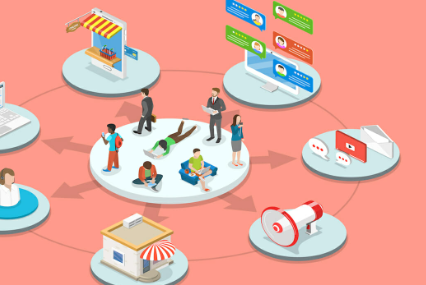How to Create a Seamless Omnichannel Experience for Your Customers

Customers have multiple channels to interact with brands. Physical stores, websites, shopping apps, and social media to name a few of them.
In fact, customers are spoilt for choice with brands, and if there are inconsistencies in how the brand is presenting itself, it can make them leave for other options.
Businesses must ensure consistency across all of these touchpoints. One has to create a seamless, omnichannel experience for customers. There has to be a unified customer journey, to create the right impression.
We look at some practical strategies and examples of how this can be done.
Understand Your Customer Journey
Companies need to map out the customer journey by identifying the various touch points by which the customers engage with their brand.
To give a common example, Apple has the Apple Store website, and also has physical Apple stores across the world. Both these channels are selling the same product.
If the customer starts their journey online, by browsing your product on Instagram, but completes the purchase on your website, the experience should be consistent.
Though the platforms would be different, the product details, features, prices, and offers should be the same. If the customer finds some inconsistencies, he will not trust the brand.
Unify Your Brand’s Message Across Channels
Your brand’s logo, color schemes, themes, styles, and copywriting tone have to remain the same across all the various platforms. Your voice in all the marketing messages, including all the visual elements, needs to be consistent, too.
This cohesive messaging builds brand recall, making it instantly recognizable. Hocoos suggests using an AI website builder that has design themes and tools that integrate with the various marketing platforms.
Integrate Your Data Systems
When customers interact with your brand, they shouldn’t need to retype information or redo something they did on a different touchpoint. The way to make this happen is that the information collected from all customer-facing channels should sync into a central database.
If a customer purchases something from your company through an in-store purchase, for example, your online platform should be able to recognize that purchase.
Centralized data also lets companies make customer portfolios, using analytics to gain insights into customer behavior, preferences, and buying patterns. Use a customer relationship management (CRM) tool with the platforms to ensure that the data is synced and consistent.
Personalize the Experience
Personalization isn’t just about addressing the customer by name in the email correspondence! Businesses offer personalized content, recommendations, and offers.
All of this is based on analyzing customers’ preferences and past interactions and building an algorithm.
For example, if a customer has searched for a white shirt. Previously, a purchase was made for a white tee shirt. This forms customer preference, and a combo offer in similar colors can be recommended.
Optimizing For Mobile Devices
Customers often start browsing for a certain product on a mobile phone, and then complete the purchase later on their laptops. If the mobile experience and responsiveness of the website are not optimized, this can break the purchase cycle.
The website should have clear buttons, quick loading times, and consistency in the process. These details seem small but make a huge difference.
In the 2024 2nd quarter, smartphone traffic came to be around 77 percent of all retail site traffic across the world. This means most online customers would be using their phones to start looking for a product but would often switch to a desktop or laptop to make the actual purchase. If the mobile device experience is excellent, many more would make the purchase right there.
Empowering Your Staff
It’s not just technology that customers interact with. When they visit a physical store, or talk to a customer service executive, they are interacting with the company. They would expect the same level of service and personalization here as well. Regular staff training to keep them on the same page is a must.
If the experience is delightful and consistent, the customer will likely return for repeat purchases. Many companies want to automate customer interaction and provide us with a human-less approach. But no matter how advanced technology gets, humans will always need other humans.
Apart from training their staff, businesses can instruct them to take customer feedback and provide data points for improvement. The customer is yours if the issues are known to you beforehand and you rectify them.
If customers see a disconnect between the online and the offline experience of a company, they vote through their wallets. They shop elsewhere, where they have a more seamless, pleasant, and even delightful experience.
Providing a seamless experience in all the customer-facing channels is the way to get more business.




